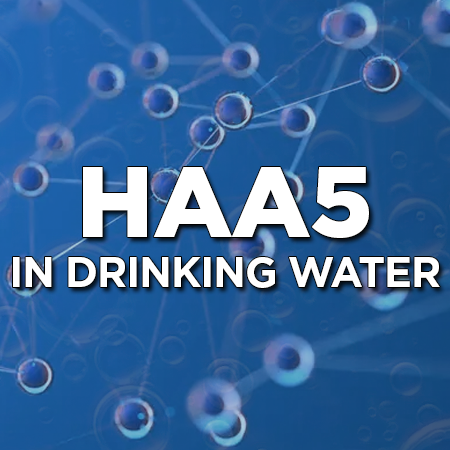Understanding Your Drinking Water: Elevated Levels of Haloacetic Acids (HA) in Phillipsburg’s City Water

If you live in or near Phillipsburg, Montana, you may have recently seen the 2024 Annual Drinking Water Quality Report The report reveals that the city’s water supply contains levels of Haloacetic Acids (HAA5) that exceed the maximum allowable limits. While most people are familiar with water contaminants such as lead and bacteria, Haloacetic Acids may be a lesser-known concern. However, the potential health risks from long-term exposure to this chemical are real and significant.
In this blog, we’ll break down what HAA5 is, why it’s present in the Phillipsburg water supply, and what you can do to protect your health and that of your family.
What Are Haloacetic Acids (HAA5)?
Haloacetic Acids, commonly referred to as HA or HAA5, are a group of chemicals that form when chlorine, a common disinfectant used in water treatment, reacts with naturally occurring organic matter. Chlorination is crucial for killing harmful bacteria and pathogens in public water supplies, but it can also lead to the creation of these byproducts, including HAA5.
The five most common Haloacetic Acids monitored in drinking water are: chloroacetic acid, bromoacetic acid, dichloroacetic acid, dibromoacetic acid, and trichloroacetic acid. These are all typically referred to as HAA5.
Why Is HAA5 in Phillipsburg’s Water?
The 2024 Annual Drinking Water Quality Report notes that Phillipsburg City Water contains HAA5 levels that surpass the federal maximum contaminant level (MCL). The MCL for HAA5 is set at 60 parts per billion (ppb) by the Environmental Protection Agency (EPA), and according to the report, the levels in Phillipsburg exceed this threshold.
This issue is not unique to Phillipsburg. Many water systems across the country, especially those that rely on surface water sources, struggle to keep HAA5 levels within the acceptable range. Factors such as the amount of organic material in the water and the specific disinfection process used can impact the concentration of these acids. While chlorine remains an effective means of water purification, its byproducts like HAA5 can pose significant health risks if not properly managed.
What Can You Do to Protect Your Health?
If you’re concerned about the high levels of HAA5 in your water, there are several steps you can take to reduce your exposure and protect your health:
- Install a Water Filtration System: A high-quality water filtration system, such as a reverse osmosis (RO) unit, can effectively reduce or eliminate Haloacetic Acids from your drinking water. RO systems work by forcing water through a semi-permeable membrane, removing not only HAA5 but also other potential contaminants like lead, chlorine, and arsenic. A whole-house filtration system can also be considered if you’re concerned about contaminants affecting your entire water supply.
- Use Bottled Water: If a filtration system isn’t immediately feasible, consider using bottled water for drinking and cooking, especially for vulnerable groups like infants, pregnant women, and the elderly, who may be more sensitive to the health risks associated with HAA5.
- Monitor Future Reports: Stay informed by keeping an eye on future drinking water quality reports from Phillipsburg. Local water authorities are required to provide annual updates, and any changes in contaminant levels should be reflected in these reports. This helps ensure that you are aware of any improvements or further concerns with your water supply.
- Advocate for Better Water Treatment: As a resident of Phillipsburg, you have the right to advocate for better water quality. Engaging with local officials and water utility providers can push for improvements in water treatment processes to lower HAA5 levels. Often, adjustments to the disinfection process, such as switching to alternative disinfectants like chloramines, can help reduce the formation of Haloacetic Acids.
How Clearwater Systems Can Help
At Clearwater Systems we understand how important clean, safe drinking water is for your health and peace of mind. That’s why we offer a range of water treatment solutions specifically designed to tackle the contaminants found in your local water supply, including HAA5. Our team of Certified Water Specialists can assess your current water quality and recommend the most effective filtration system for your home.
With over 75 years of experience in the water treatment industry, we have helped countless families find solutions to their water quality concerns. Whether you’re looking for a whole-house filtration system or a drinking water system like the Kinetico K5 Drinking Water Station, Clearwater Systems has the technology and expertise to keep your water safe.
Conclusion
While chlorination remains a necessary process for ensuring that water is free of harmful pathogens, the byproducts it creates can have serious implications for public health. By installing a water filtration system, staying informed, and advocating for improvements in water treatment, you can protect yourself and your family from the potential dangers of elevated HAA5 levels. At Clearwater Systems, we’re here to help guide you every step of the way, offering trusted solutions for cleaner, safer water.
For more information or to schedule a water test, contact us today to ensure that you and your family are drinking the safest water possible.



